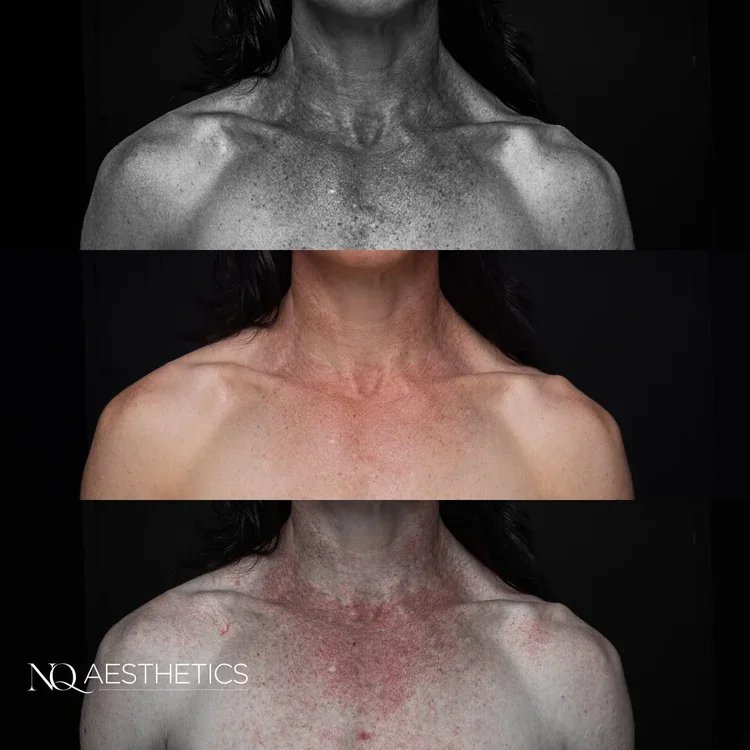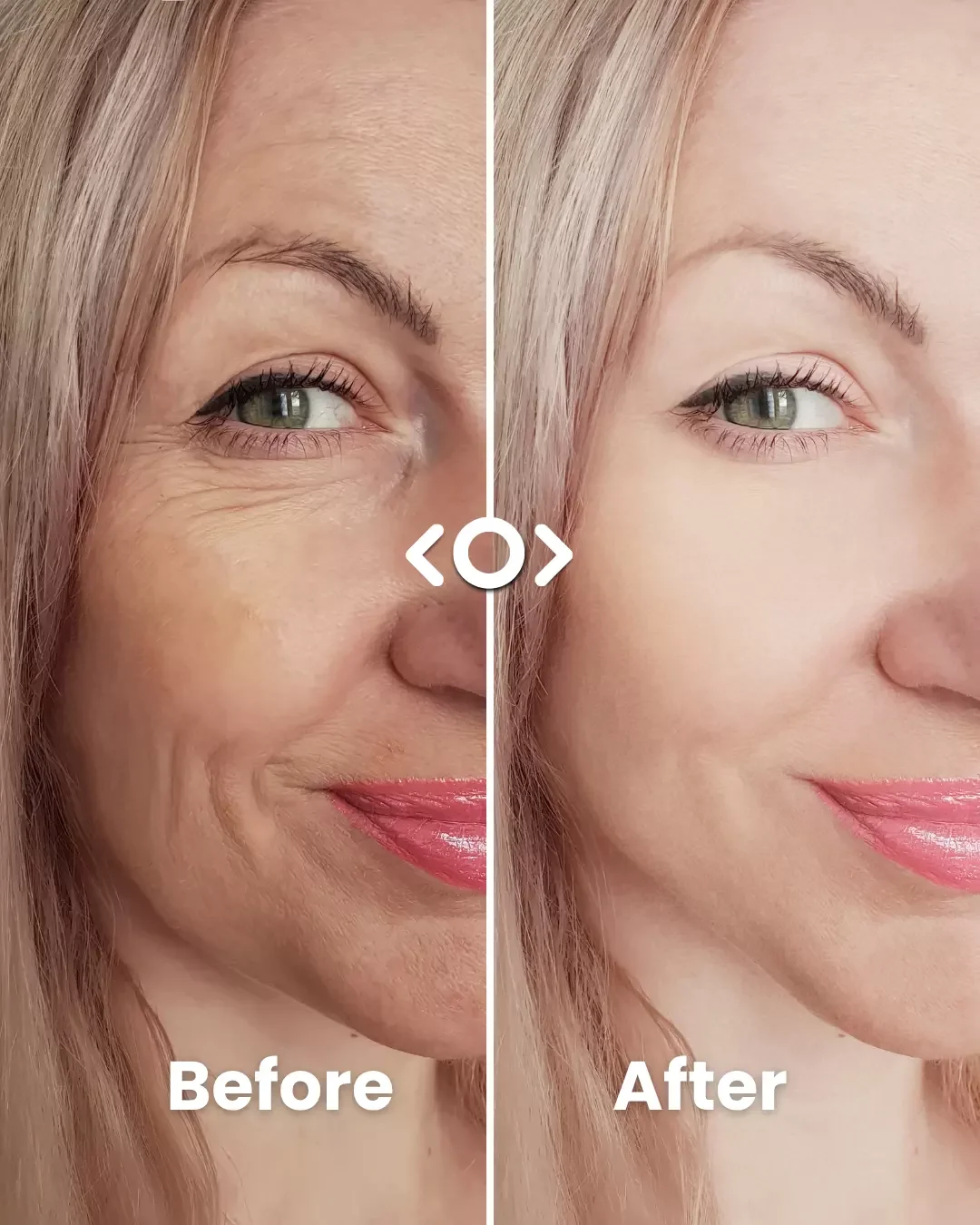Why you’re struggling with capturing skin details.
With the wide range on non-surgical modalities ever increasing, and patients concerned more about skin health rather than volume - documenting the skin has become more important than ever before.
Polynucleotides, anti-wrinkle treatments or laser treatments all require accurate diagnosis and imaging of the skin prior to treatment, as well as at every review stage consistently.
What are the main issues?
Out of focus
Low detail on skin
.Colour temperature of skin is yellow and blue
Exposure is different
Hair is a distraction
Direct flash flattens the image
Inconsistent lighting
Compressed image format
Face distortion from using iPads or iPhones
Using stock images
Using AI images
Photoshopping!
Using 3d simulated software that can’t capture details
AI is a no go
Since AI generated marketing became cheap enough, we’ve seen agencies on sell these images to clinics. Not only is is wasting your money, but it’s deceptive advertising.
Tablets and phones do not have the detail required to capture skin.
It is also near impossible to get the same results twice as the ‘camera’ app is on automatic and adjusts to the scene each time.
Why consistency matters.
Consistent images allow patients to focus on the details - allowing you to educate and not sell.
Creating realistic images that reproduce real life is a science. Despite any marketing from Apple or Samsung - images produced from phones and tablets are never going to good enough to accurately display human skin, texture, ethnicity and shape. Accuracy matters across every speciality - as does your ability to communicate patient assessments, treatment results and your clients journey.




Before and afters of your results are the main commodity for educating your patients, and attracting new ones. The market place is increasing competitive and patients are often overwhelmed with social media advertising misinforming them of what’s real and achievable through modern surgical and non-surgical techniques.
Multispectral images allow you to showcase what is hidden visually to the patient, further informing them on treatment options.
Different ways that our clients educate their patients
Further reading :
A standardised system of photography to assess cosmetic facial surgery












